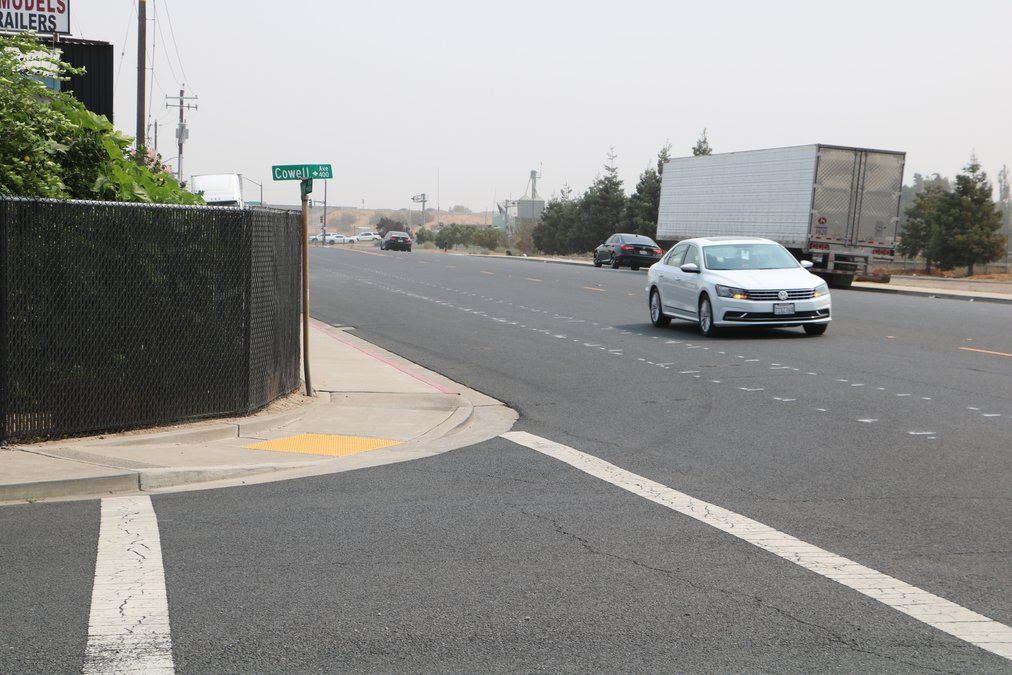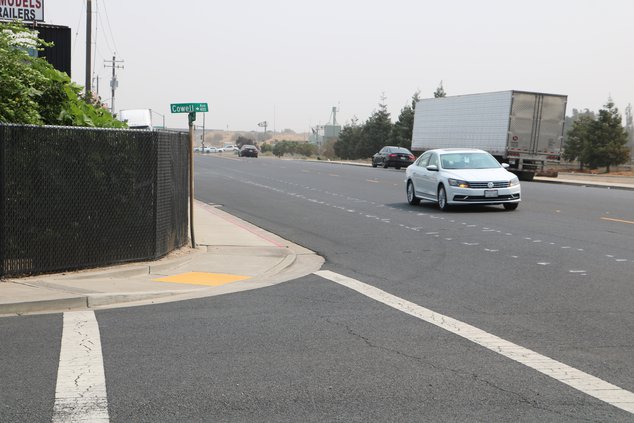The change — although critics view it as a purge — started at Manteca City Hall a year ago this month.
It began with then City Manager Tim Ogden being placed on paid administrative leave.
By the time the dust started settling in late November two thirds of the city’s executive team had either been put on administrative leave, departed or reassigned to new positions.
And now as Sept. 27 approaches — the day Ogden was placed on administrative leave — there is only two of the executive team chairs occupied by the same people as they were a year ago. That number will dwindle down to one at the end of the month as City Attorney John Brinton retires ending a 40-year plus tenure as the contracted municipal attorney. The last man standing is Fire Chief Kyle Shipherd.
Lutzow who was plucked from her position as human resource director to serve as interim city manager when Ogden was put on paid leave is now the city manager. City Clerk Lisa Blackmon was elevated to the position of assistant city manager.
A search is now underway for a finance director, a police chief, and an-house city attorney.
Critics have framed it as everything from a power grab to a personal vendetta.
The biggest target for the criticism on social media and elsewhere has been Mayor Ben Cantu and to a lesser degree much of the rest of the City Council.
Cantu, however, can’t unilaterally hire or fire the city manager. It takes a majority of the council acting in concert. The vote that triggered the changes was 4-1 with Councilman Dave Breitenbucher dissenting.
The council’s marching orders to the city manager essentially was for Lutzow to do her job by looking for out-of-the-box solutions by empowering staff to step up instead of relying on consultants. They also wanted projects to move faster.
As a general law city in California, the city manager has the authority to hire and fire department heads The city council does not have such authority. The only exception is the city attorney that directly advises the council and, if local councils opt to do so, the city clerk who supports the council. That means the decision on who will serve as the city’s first in-house attorney in 102 years will be by the vote of the council.
By the same token, if the council majority clearly disapproves of what a city manager is doing they can vote to remove them.
All of those changes came while Lutzow was interim city manager and then acting city manager. She was granted permanent status on a 4-1 vote afterwards.
Moves were to get things done
for Manteca’s residents at less cost
Mayor Cantu made it clear that the personnel moves weren’t for the sake of change nor was there a hidden agenda.
As far as the mayor is concerned it was about getting things done in a timely manner with more effective results — and if possible — at less expense.
“How is it two years ago it can’t be done and now the city has been able to do good changes?” Cantu asked of various endeavors.
There are four high profile examples of road projects that underscore Cantu’s point.
People had expressed concern about safety on Moffat Boulevard — a wide street that runs for 1 ½ miles in the heart of Manteca without benefit of stop signs, traffic signals or other devices such as roundabouts that serve to help keep speeds down.
Numerous near misses were happening before and after school at Manteca High. Traffic at times would travel significantly above the speed limit. Lane configurations created an unsafe situation — along with a 6-foot high corner fence and trucks that would park illegally from time-to-time in a red zone — for motorists trying to turn left or right from Cowell onto Moffat literally have to move past the stop sign in order to see westbound traffic that would travel dangerously close to the curb. Trucks also were parking illegally in front of fire hydrants and creating visual impediments to people — especially children — trying to cross from the Powers Tract neighborhood to reach an access point to the Tidewater Bikeway.
The solution advanced by then Public Works Director Mark Houghton employed the use of bike lanes to narrow the path of travel to slow traffic as was done on Powers Avenue, placing flashing pedestrian LED beacons at crosswalks by Manteca High, more signage and shifting the travel lanes near Cowell.
The tab for hiring a consultant to do the design and going out to bid for a contactor to do the work would have cost the city a minimum of $220,000.
The council directed it to be done in-house instead from the design to the actual physical project.
The cost plummeted significantly. The pedestrian safety signage and flashers cost $50,000. The city is also incurring paint costs as well as in-house labor. The cost savings — given street crews are already budgeted and are on the city payroll — is likely to push $160,000 meaning the project is being done for 70 percent less than the “old way” of doing thing at city hall.
The project is also being done quicker.
Crews on Tuesday were chalking lines for permanent paint on the segment closest to Spreckels Avenue. Work on what the council considered the most pressing issue — student safety at Manteca High — was done more than seven months ago. Another segment of stripping street crews were able to work in to extend improvements down to Powers Avenue happened earlier this summer.
And while it is being done in three parts, the project will likely be completed ahead of the projected timeline for having an outside consultant design it and an outside contractor do the work.
Lathrop Road fix was
a quick turnaround
When the City Council in December of 2019 was made aware the 2,500-foot section of Lathrop Road east of Airport Way was a few years away from completely failing, they instructed staff to do the work even though it was not on the city’s list of pressing capital improvement projects.
Municipal staff told the Manteca City Council and the community at the December council meeting that the segment of the road would be reconstructed and finished before September. Deputy Public Works Director Koosun Kim — who was overseeing the department while Houghton’s replacement search was underway — said at the time it was a promise the staff could keep by doing something that hadn’t happened in at least 30 years if not forever in Manteca — all of the work except for the actual construction would be done in house.
Cantu at the time was caught a bit off guard by the statement given the city’s tendency to rely on outside firms to do such work as design, bid preparation, and construction management as well as the department in recent years being shorthanded.
By the city doing the pre-work and construction management it saved $200,000 bringing the project in for less than $1.5 million. It also allowed the work to be done months sooner
North Main work moving forward
at least 50 percent lower cost
The on-staff know how to look for the best possible solution resulted in a second look at a decision to widen four blocks of North Main through the central district to four lanes to end the two-lane tourniquet that routinely backs up traffic through downtown.
The plan originally advanced would have cost more than $4 million as the street would need to be widened by four feet and eat into sidewalks. It would also require all street lights and traffic signals to be relocated. In addition an underlying 6-inch thick slab of concrete that was the original Highway 99 would needed to have been cracked or completely removed to prevent the asphalt pavement put in place from having a shortened life.
Staff decided to take a holistic approach that Cantu praised as “out of the box thinking”. The plan addresses lingering flooding problems that have persisted after two significant storm drain system improvements since 1989 failed to completely compensate for the flatness of the area in sudden downpours.
That is where pavers enter the picture to address a multitude of problems.
They include the ability to retain 10-foot wide travel lanes, avoid costly relocation of street lights and traffic signals that would be subject to notorious PG&E delays that drive the cost of projects up, eliminates the need to replace 4,000 plus feet of curb and gutter, addresses perennial flooding during heavy or sustained downpours at the Main and Center intersection, recharges the groundwater, and does not require taking out sidewalk and making them narrower or having store doors replaced so they open inward.
It also eliminates the need to paint traffic lanes, sidewalks, and turn lane arrows as those are put in place with colored pavers.
There is also the low maintenance cost. Pavers have a lifespan of 65 years versus asphalt at 17 years. Also if utility work is done, pavers are removed to get into trenches and then replaced without unsightly and often uneven pavement patching. If by chance several pavers “settle” they can easily be taken out and repacked using sand.
The original cost for the project was pegged at $3.9 million with PG&E relocation work that would be required costing another $500,000 to $1 million and possibly delaying the project longer. By using pavers the project will cost $1 million to $2 million for the 2,600-foot long stretch and roadway that averages 50 feet in width depending upon the condition of the existing 6-inch thick concrete. The concrete is a required base for pavers. The initial savings from going with pavers could easily exceed $2 million.
By using pavers the 2-foot wide gutters can be eliminated on both sides of the street. That space can then be added to travel lanes so all four lanes and the turn lane in the middle are 10 feet wide to avoid having to widen the street.
Pavers are packed in sand making them a permeable road surface. The area under where the gutters are now would have a 2-foot wide “French drain” or storm water infiltration system using gravel. The drains will run the distance from Yosemite to Alameda on both sides of the street and will go down far enough runoff can effectively recharge the ground water and take pressure off the storm drain system.
The project is now out to bid and physical work will start after the first of the year.
Airport Way moving forward
sooner at a lower cost as well
Cantu noted Manteca’s in-house staff is using the same approach to get the widening and resurfacing of Airport Way between Wawona Street and Yosemite Avenue underway by next year.
Instead of six lanes it will be four lanes thanks to a plan to extend Milo Candini Drive to Yosemite Avenue to take pressure off Airport Way. In doing so it eliminates the need to obtain right-of-way or relocate PG&E power lines.
Cantu said empowering staff and finding department heads that don’t view their job as simply a 9 to 5 gig to collect a paycheck is key to getting projects done and making sure taxpayers get the most bang from their money.
To contact Dennis Wyatt, email dwyatt@mantecabulletin.com





